- Joined
- Nov 10, 2019
- Messages
- 468
- Points
- 373

Not long ago, I received a silicone mold back from the jewelry casting company Bernhard Kauselmann GmbH & Co. KG in Pforzheim, Germany. I had originally commissioned it in 2013 for the gun carriage brackets of the 30-pounder carronades on my model of the French corvette La Créole (1827). The company returns molds if no orders have been placed for over five years – a good reason to revisit this topic and share it as a tip for historical ship modelers.

Starting Point
For my 1:48 scale model, I needed 20 pairs of gun carriage brackets for the 30-pounder carronades. To achieve an authentic metallic appearance, I opted for burnished brass. Due to the complex shape, producing all 40 parts by milling and filing was not feasible – only the prototypes were made this way.
The Path to Brass Investment Casting
The idea of using brass investment casting likely came from conversations with experienced modeling colleagues. After some research, I came across the Kauselmann jewelry foundry, which also specializes in precision cast parts for model building. Their pricing was reasonable, and they used the lost-wax casting process:
First, master models were made from brass – one left and one right bracket block
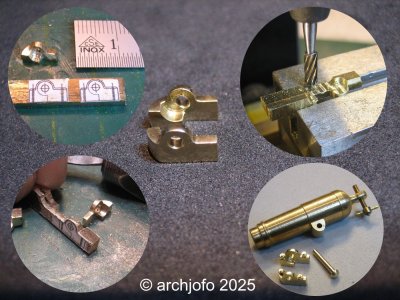
Silicone molds were then created from these masters and filled with special wax.
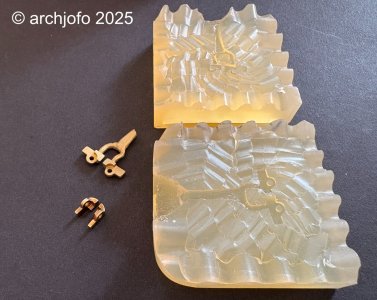
The wax models served as the basis for the brass castings.
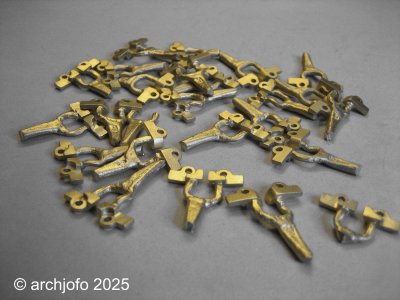
Alternative: 3D Printing
In theory, a digital design with 3D printing would have been possible – but at the time, this technology was not yet widespread, and I lacked CAD skills. Since I aim to craft as much as possible myself, I chose the traditional route of handwork and foundry collaboration.
Finished Part on the Model
Here are two photos of the completed 30-pounder carronade of La Créole, of which there were 20 on board.
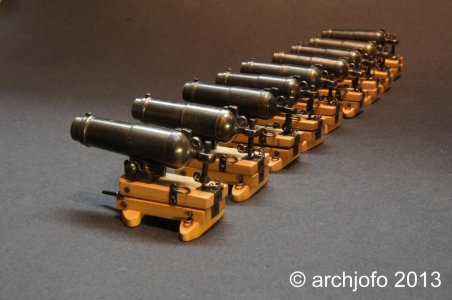
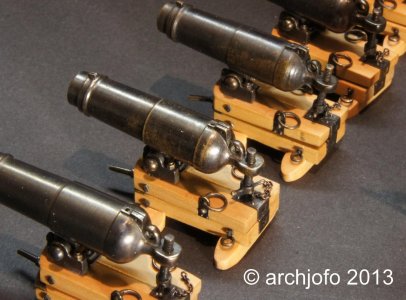
And finally, a comparison image showing the model alongside a historical photo of a real carronade.
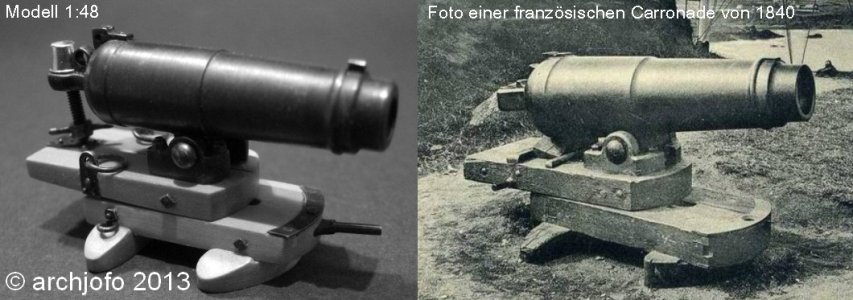
Conclusion
Producing small parts like gun carriage brackets in 1:48 scale demands high precision, careful material selection, and repeatability. Brass investment casting offers a compelling solution: it combines the craftsmanship of creating the master model with professional reproduction technology. For me, it was the ideal way to produce a larger number of complex parts in consistent quality – without giving up the spirit of scratch-building.
I hope this experience report inspires other modelers to explore new approaches when facing similar challenges – whether through casting, 3D printing, or other techniques. What matters most is that the result is convincing – and that the journey brings joy.

Starting Point
For my 1:48 scale model, I needed 20 pairs of gun carriage brackets for the 30-pounder carronades. To achieve an authentic metallic appearance, I opted for burnished brass. Due to the complex shape, producing all 40 parts by milling and filing was not feasible – only the prototypes were made this way.
The Path to Brass Investment Casting
The idea of using brass investment casting likely came from conversations with experienced modeling colleagues. After some research, I came across the Kauselmann jewelry foundry, which also specializes in precision cast parts for model building. Their pricing was reasonable, and they used the lost-wax casting process:
First, master models were made from brass – one left and one right bracket block

Silicone molds were then created from these masters and filled with special wax.

The wax models served as the basis for the brass castings.

Alternative: 3D Printing
In theory, a digital design with 3D printing would have been possible – but at the time, this technology was not yet widespread, and I lacked CAD skills. Since I aim to craft as much as possible myself, I chose the traditional route of handwork and foundry collaboration.
Finished Part on the Model
Here are two photos of the completed 30-pounder carronade of La Créole, of which there were 20 on board.


And finally, a comparison image showing the model alongside a historical photo of a real carronade.

Conclusion
Producing small parts like gun carriage brackets in 1:48 scale demands high precision, careful material selection, and repeatability. Brass investment casting offers a compelling solution: it combines the craftsmanship of creating the master model with professional reproduction technology. For me, it was the ideal way to produce a larger number of complex parts in consistent quality – without giving up the spirit of scratch-building.
I hope this experience report inspires other modelers to explore new approaches when facing similar challenges – whether through casting, 3D printing, or other techniques. What matters most is that the result is convincing – and that the journey brings joy.
Last edited:






